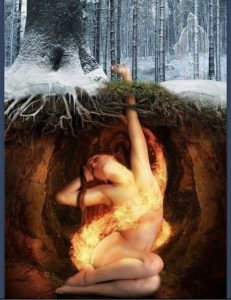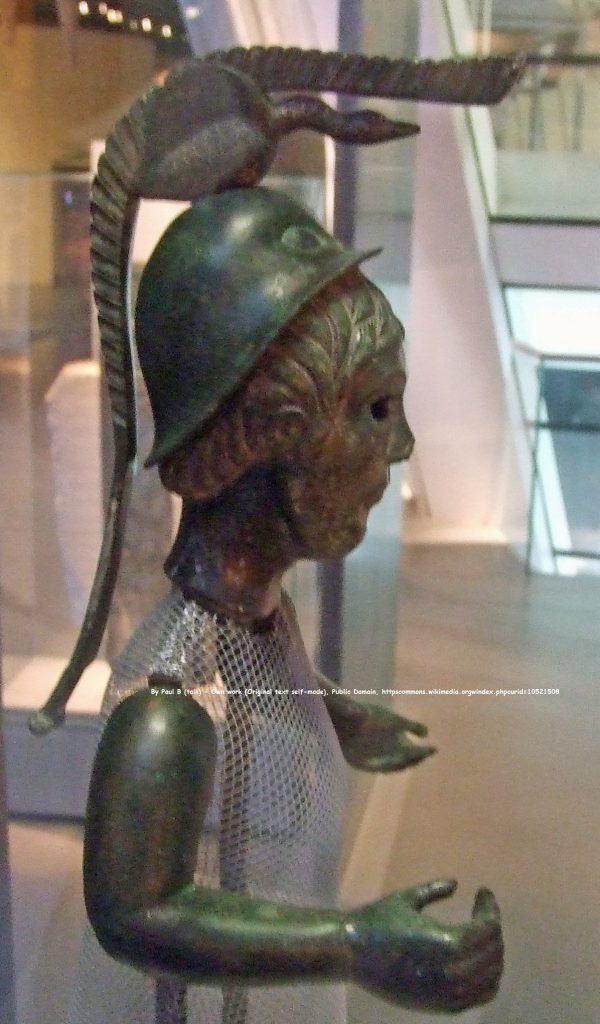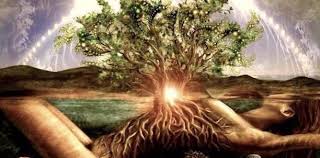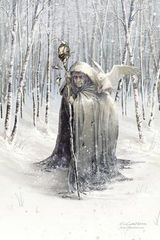Alternative names for Imbolc: Feast of Brigantia, Gwyl Ffraed or Gwyl Fair y Canhwyllau (Welsh)
When?: Usually celebrated on the 1st or 2nd February
Imbolc – The Quickening
This is the first of the spring celebrations. Up until now everything has been resting and dormant, it has been preparing for this moment. Refreshed and purified by the cold and the frosts, this is the quickening. The spark of life fires into action. Mother Nature is waking up from her winter sleep.
Imbolc marks the very beginning of the first signs of spring. Snowdrops and Crocuses are appearing alongside Witch-Hazel. Quickly followed by the likes of Daffodils, Iris and Pussy-Willow. The ewes are in milk and the first lambs are starting to be born. Nature speeds up and everything starts to go crazy.
Imbolc, falling roughly half-way between the Winter Solstice and the Spring Equinox is a deserving celebration. Life and colour are becoming visible again.


Imbolc Historical Context
This festival has a variety of names associated with it. Depending on which culture/location you are viewing it from. Brigantia was the patron deity of the Brigantes tribe and also the name of their territory. The territory of Brigantia which now forms Northern England and part of The Midlands covered the majority of the land between the River Tyne and the River Humber forming the largest Brythonic Kingdom in ancient Britain
Brigantia’s counterpart in Ireland is Brigid. Brigid, later adopted and canonised by Christianity became St. Bridget. In Wales she is know as Sant Ffraid or Ffraed. This is Groundhog Day in the USA. Where the behaviour of a small furry creature forecasts the forthcoming weather.
Early spring is traditionally a time to ensure protection and fertility for the crops and animals. Rites and traditions centered around this purpose. Fire and later the lighting of candles formed a central part. Christianity also adopted these principles. Imbolc became Candlemass. A Christian ceremony centred on purification.
It is a festival based on seasonal changes associated with the onset of lambing and the blooming of the Blackthorn. These events can vary by as much as two weeks before or after the 1st. Today we celebrate this festival on the 1st or 2nd February. Under the old Julian calendar the 1st February would now occur on or about the 12th.
There is a school of thought that the actual time of celebration may have been a lot more fluid, and have occured at the nearest full-moon. Anecdotal evidence suggests that more lambs are born at full moon. This has been proven true for cows.
The full-moon in February is referred to as the Storm or Snow-Moon. Statistically there is a higher chance of snow in this month than any other.
Change Is In the Air
For those living in a closer harmony with nature there are signs all around that change is in the air. The days are now getting noticeably longer with the Sun rising a good half an hour earlier and setting a good hour later than it did on the Solstice in December. There is also a tangible warmth to be felt when the Sun is shining on your back. Other signs start to appear, hazel catkins, snowdrops, bluebell shoots. Elder buds start bursting, primroses & lesser celandine appear alongside frogspawn. Bird song increases and gets more urgent as they welcome in the spring.
All around us things are beginning to germinate and stir. A sense of urgency is starting to buzz in the air. We are an intrinsic part of all of this and it is time to germinate and stir things within ourselves also. Imbolc is a festival of ‘hearth & home’ and it is time to put our own lives in order.

Imbolc Folk-Lore Customs and Traditions
- Fire & Purification were always an important part of this festival – the lighting of fires has always been a symbolic and sympathetic magic to encourage the increasing power of the Sun. After Imbolc the rate of change in the length of daylight increases dramatically.
- Weather Divination – Imbolc is the time for weather divination with the old tradition of watching to see if badgers or serpents came out of from their winter dens being a forerunner of the North American Groundhog Day. According to the Carmina Gadelica, an early proverb about the day goes : –
Thig an nathair as an toll
(The serpent will come from the hole)
la donn Bride
(on the brown day of Bride)
Ged robh tri traighean dh’an
(though there should be three feet of snow)
Air leachd an lair
(On the surface of the ground.)
- The Cailleach (the hag) gathers firewood for the rest of the winter on this day. Legend has it that if she wishes to make the winter last a good while longer, she will make sure the weather on Imbolc is bright and sunny, so she can gather plenty of firewood. If the weather on the day of Imbolc is foul, it means the Cailleach is asleep and winter is almost over.

- Clootie Wells. Visited at Imbolc, visitors to holy wells would pray for health while walking ‘sunwise’ around the well. They would then leave offerings; typically coins or clooties (strips of cloth or rags as protection offerings). Taking water from the well home was common practice. Then used in blessings for the home, family members, livestock and fields.
Imbolc Crafts
Brigid’s Cross. The most widely practiced custom associated with Imbolc. These are weavings of straw or rush that can be as simple as a few strands or amazingly elaborate. Most folks are familiar with the three or four-armed variety but there is a great number of different regional patterns.
Once the cross is completed, speak a request to Brigid for blessing and protection of the home and family members. Previous years crosses would be moved to the rafters or attic. And the new crosses hung in their place near the entryways to the dwelling.
Crosses woven by children should be hung on the wall over their beds. If you happen to have a barn or out-building you should hang one there as well. Historical belief was that they were effective in protecting the household and its inhabitants from fire and lightening.
